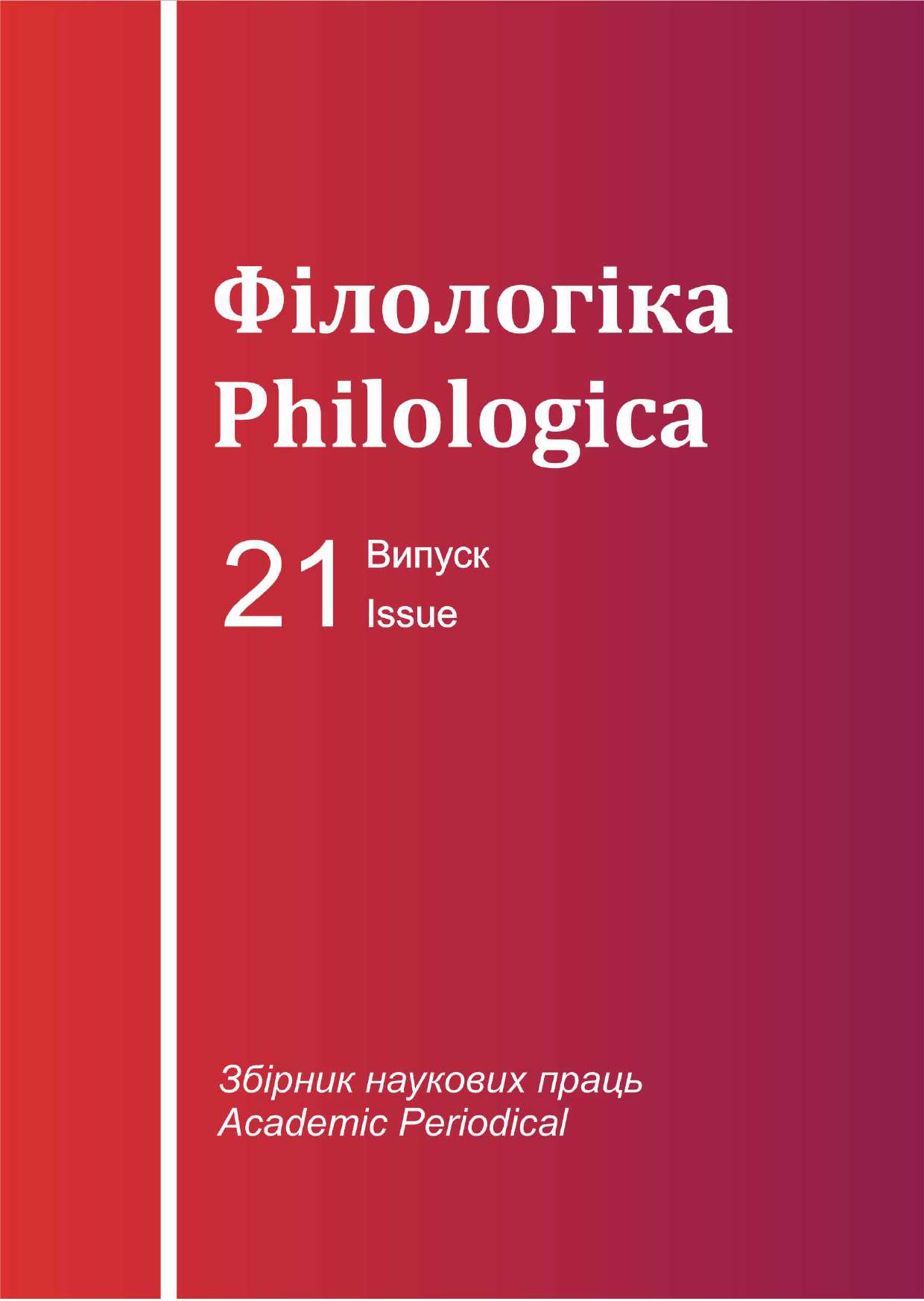Male language personality in cinematic discourse(based on the film adaptation of the novel “A hero of our time” by M. Lermontov)
DOI:
https://doi.org/10.31812/filstd.v21i.4765Keywords:
vocabulary, verbal-semantic level, macroclasses, semantic fieldsAbstract
The article presents an analysis of the verbal-semantic level of the linguistic personality of Grigory Pechorin based on the material of the film adaptation of M. Lermontov's novel “A Hero of Our Time”. The lexical analysis of the main character of the film adaptation was carried out according to the three-levelled system proposed by Yu. Karaulov. At the first stage of the study, all the hero's replicas were selected by the method of continuous sampling. Further, all the selected words were distributed by macroclasses (parts of speech), and within macroclasses – by semantic fields and concretizing subgroups. A quantitative analysis of the selected unique words and their word usage in the hero's speech made it possible to establish that pronouns prevail over all parts of speech in terms of the number of word usage. It can be explained by the fact that the object of research is one of the varieties of discourse – hero’s speech which is surrounded by real life, and, as you know, even depicted colloquial speech usually tends to a certain degree of similarity to real colloquial speech, which determines the role of the environment within the text fragments with direct speech. Indicating words (pronouns) can be considered as such an environment since they are verbal means of explicating the elements of a modelled communicative situation. While in terms of the number of positions, verbs prevail over all parts of speech. The numerical superiority of adjectives over adverbs in terms of the number of positions and the priority of adverbs over adjectives in terms of word usage was also noted.
Metrics
References
Bahtin M. M. Slovo v romane. Moskva : Eksmo, 2017. 229 s.
Vasіlenka K. M., Ryngevіch V. V. Moўnaya asoba Ganny Karenіnaj u lіtaraturnym dyskurse і kіnadyskurse. Vestnik Minskogo gos. lingvisticheskogo un- ta. Seriya 1 : Filologiya. 2017. N 3 (88). S. 73–79.
Vinogradov V. V. Yazyk kak tvorchestvo. Moskva : Prosveshchenie, 1995. 126 s.
Karaulov Yu. N. Russkij yazyk i yazykovaya lichnost'. Moskva : Nauka, 1987. 262 s.
Kolodina E. A. Status kinodialoga v ryadu sopolozhennyh ponyatij: kinodialog, kinotekst, kinodiskurs. Vestnik Nizhegorod. un-ta im. N. I. Lobachevskogo. Filologiya. 2013. N 2(1). S. 327–333.
Ringevich V. V. Yazykovaya lichnost' kak sterzhnevoe ponyatie pri izuchenii diskursa. Vostochnoslavyanskie yazyki i literatury v evropejskom kontekste – V : sb. nauch. statej. Mogilev, 2017. S. 32–35.
Ringevich V. V. K voprosu o kinodiskurse. Teoreticheskie i prakticheskie predposylki podgotovki polilingval'nyh specialistov v vuze : materialy IV Mezhdunarod. nauchno-prakticheskogo onlajn-seminara. Mogilev, 2018. S. 82–85.
Ringevich V. V., Vasilenko E. N. Zhenskaya yazykovaya lichnost' v kinodiskurse (na materiale ekranizacii romana L. N. Tolstogo “Anna Karenina”). Thesaurus : zb. navuk. pr. Mezhdyscyplіnarnyya dasledavannі. Magіlyov, 2017. Vyp. IV. S. 59–65.
Ringevich V. V. Individual'nyj leksikon yazykovoj lichnosti v russkom i anglijskom yazykah. Vestnik Minskogo gos. lingvisticheskogo un-ta. Seriya 1 : Filologiya. 2018. N 4 (95). S. 43–49.
Ringevich V. V. Literaturnyj diskurs i kinodiskurs v sisteme art diskursa. Filolohichni studii : Naukovyi visnyk Kryvorizkoho derzhavnoho pedahohichnoho un-tu. Krivij Rіg, 2017. Vyp. 16. S. 417–424.
Churilina L. N. Yazykovaya lichnost' v hudozhestvennom tekste. Moskva : Flinta : Nauka, 2011. 240 s.
Zalevskaya A. Interfacial theory of word meaning: a psycholinguistic approach. London : International Academy of Science and Higher Education, 2014. 188 p.






